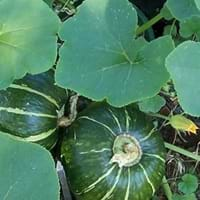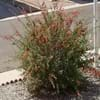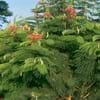Life Span
Annual and Perennial
Annual
Origin
South Africa
Central America, Mexico, North America
Types
Not Available
Neck, Really Big Hybrid, Waltham
Habitat
Boggy areas, Dappled Shade, Shady Edge, Sunny Edge, Woodland Garden Canopy
Cultivated Beds
USDA Hardiness Zone
9-11
9-11
Sunset Zone
H1, 14, 15, 16, 17, 18, 19, 20, 21, 22, 23, 24
A1, A2, A3, H1, H2, 1a, 1b, 2a, 2b, 3a, 3b, 4, 5, 6, 7, 8, 9, 10, 11, 12, 13, 14, 15, 16, 17, 18, 19, 20, 21, 22, 23, 24
Habit
Upright/Erect
Prostrate/Trailing
Flower Color
Light Yellow, Ivory
Yellow, Gold
Flower Color Modifier
Not Available
Bicolor
Fruit Color
Brown
Peach, Tan
Leaf Color in Spring
Green
Green, Dark Green
Leaf Color in Summer
Green
Green, Dark Green
Leaf Color in Fall
Green
Green, Dark Green, Yellow green
Leaf Color in Winter
Green
Not Available
Leaf Shape
Egg-shaped
Heart-shaped
Plant Season
Spring, Summer, Fall, Winter
Summer, Fall
Sunlight
Full Sun, Partial Sun
Full Sun
Growth Rate
Medium
Very Fast
Type of Soil
Loam, Sand
Loam
The pH of Soil
Acidic, Neutral
Neutral
Soil Drainage
Average
Well drained
Bloom Time
Early Spring, Spring, Late Spring, Winter, Late Winter
Early Summer, Indeterminate
Tolerances
Wet Site
Drought
Where to Plant?
Ground, Pot
Container, Ground, Pot
How to Plant?
Seedlings, Stem Cutting
Seedlings
Plant Maintenance
Medium
Medium
Watering Requirements
Requires 4 to 8 inches of water above the soil line
Prefer drip-irrigation instead of Over-head watering, Requires regular watering
In Summer
Lots of watering
Lots of watering
In Spring
Moderate
Moderate
In Winter
Average Water
Average Water
Soil pH
Acidic, Neutral
Neutral
Soil Type
Loam, Sand
Loam
Soil Drainage Capacity
Average
Well drained
Sun Exposure
Full Sun, Partial Sun
Full Sun
Pruning
Prune in early summer, Remove damaged leaves, Remove dead branches, Remove dead leaves, Trim each shoot back to the first set of leaves
Cut out old flower stalks, Prune after flowering, Remove dead or diseased plant parts, Remove the old foliage
Fertilizers
All-Purpose Liquid Fertilizer
Apply 10-10-10 amount, Balanced organic fertilizer, iron-rich fertilizer, Nitrogen, Phosphate
Pests and Diseases
Red blotch
Bacteria wilt, Bacterial leaf spot, Blight, Cucumber beetles, Cutworms, Dry root rot, Fusarium leaf spot, Soft scales
Plant Tolerance
Wet Site
Full Sun, Shade areas, Shallow soil
Flower Petal Number
Not Available
Single
Fragrant Flower
Not Available
Yes
Fragrant Leaf
Not Available
No
Fragrant Bark/Stem
Not Available
No
Foliage Texture
Fine
Coarse
Foliage Sheen
Matte
Matte
Attracts
Butterflies
Ants, Bees
Aesthetic Uses
Showy Purposes
Not Used For Aesthetic Purpose
Beauty Benefits
Not Available
Glowing Skin, Good for skin and hair
Environmental Uses
Air purification
Air purification
Medicinal Uses
Astringent, Diaphoretic, Diuretic, Emetic, Febrifuge, Laxative, Odontalgic, Ophthalmic, Tonic
Antiasthamatic, anti-cancer, Cardiovascular problems, cholesterol-lowering, constipation, Diabetes, Fiber, High blood pressure, High cholestrol, Immunity, Manganese, Obesity, Vitamin A, Vitamin C, Vitamin E
Part of Plant Used
Bark, Fruits, Inner Bark, Root, Wood
Flowers, Fruits, Leaves, Seeds
Other Uses
Used for woodware
For making oil, Used As Food
Used As Indoor Plant
No
Yes
Used As Outdoor Plant
Yes
Yes
Garden Design
Bog Garden, Cutflower, Dried Flower, Everlasting, Feature Plant, Mixed Border, Tropical
Edible, Herb / Vegetable, Vine
Botanical Name
BERZELIA lanuginosa
CUCURBITA pepo 'White Crown of Thorns'
Common Name
Buttonbush
Winter Squash
In Hindi
Buttonbush shrub
कोंहड़ा
In German
Button Strauch
Winter squash
In French
buttonbush arbuste
courges d'hiver
In Spanish
arbusto buttonbush
calabaza de invierno
In Greek
Buttonbush θάμνος
σκουός χειμώνα
In Portuguese
arbusto Buttonbush
abóbora
In Polish
Buttonbush krzew
dynia
In Latin
Frutex Buttonbush
cucurbita
Phylum
Magnoliophyta
Magnoliophyta
Class
Magnoliopsida
Magnoliopsida
Family
Bruniaceae
Cucurbitaceae
Genus
Cephalanthus
Cucurbita
Clade
Angiosperms, Asterids, Eudicots
Angiosperms, Eudicots, Rosids
Tribe
Not Available
Not Available
Subfamily
Not Available
Papilionoideae
Importance of Buttonbush and Winter Squash
Want to have the most appropriate plant for your garden? You might want to know the importance of Buttonbush and Winter Squash. Basically, these two plants vary in many aspects. Compare Buttonbush and Winter Squash as they differ in many characteristics such as their life, care, benefits, facts, etc. Every gardener must at least have the slightest clue about the plants he wants to plant in his garden. Compare their benefits, which differ in many ways like facts and uses. The medicinal use of Buttonbush is Astringent, Diaphoretic, Diuretic, Emetic, Febrifuge, Laxative, Odontalgic, Ophthalmic and Tonic whereas of Winter Squash is Antiasthamatic, anti-cancer, Cardiovascular problems, cholesterol-lowering, constipation, Diabetes, Fiber, High blood pressure, High cholestrol, Immunity, Manganese, Obesity, Vitamin A, Vitamin C and Vitamin E. Buttonbush has beauty benefits as follows: Not Available while Winter Squash has beauty benefits as follows: Not Available.
Compare Facts of Buttonbush vs Winter Squash
How to choose the best garden plant for your garden depending upon its facts? Here garden plant comparison will help you to solve this query. Compare the facts of Buttonbush vs Winter Squash and know which one to choose. As garden plants have benefits and other uses, allergy is also a major drawback of plants for some people. Allergic reactions of Buttonbush are Toxic whereas of Winter Squash have Dermatitis respectively. Having a fruit bearing plant in your garden can be a plus point of your garden. Buttonbush has showy fruits and Winter Squash has showy fruits. Also Buttonbush is flowering and Winter Squash is not flowering . You can compare Buttonbush and Winter Squash facts and facts of other plants too.





